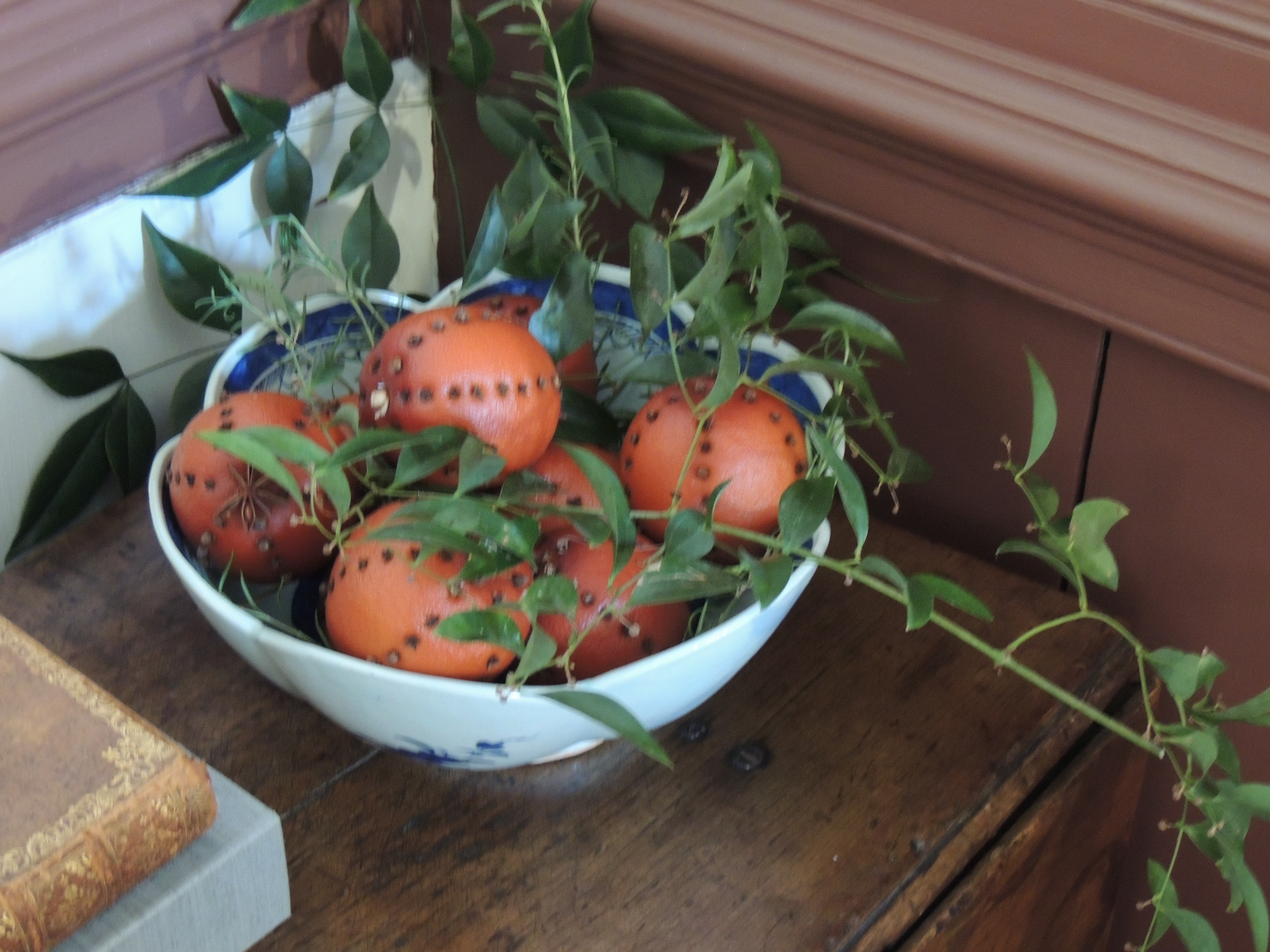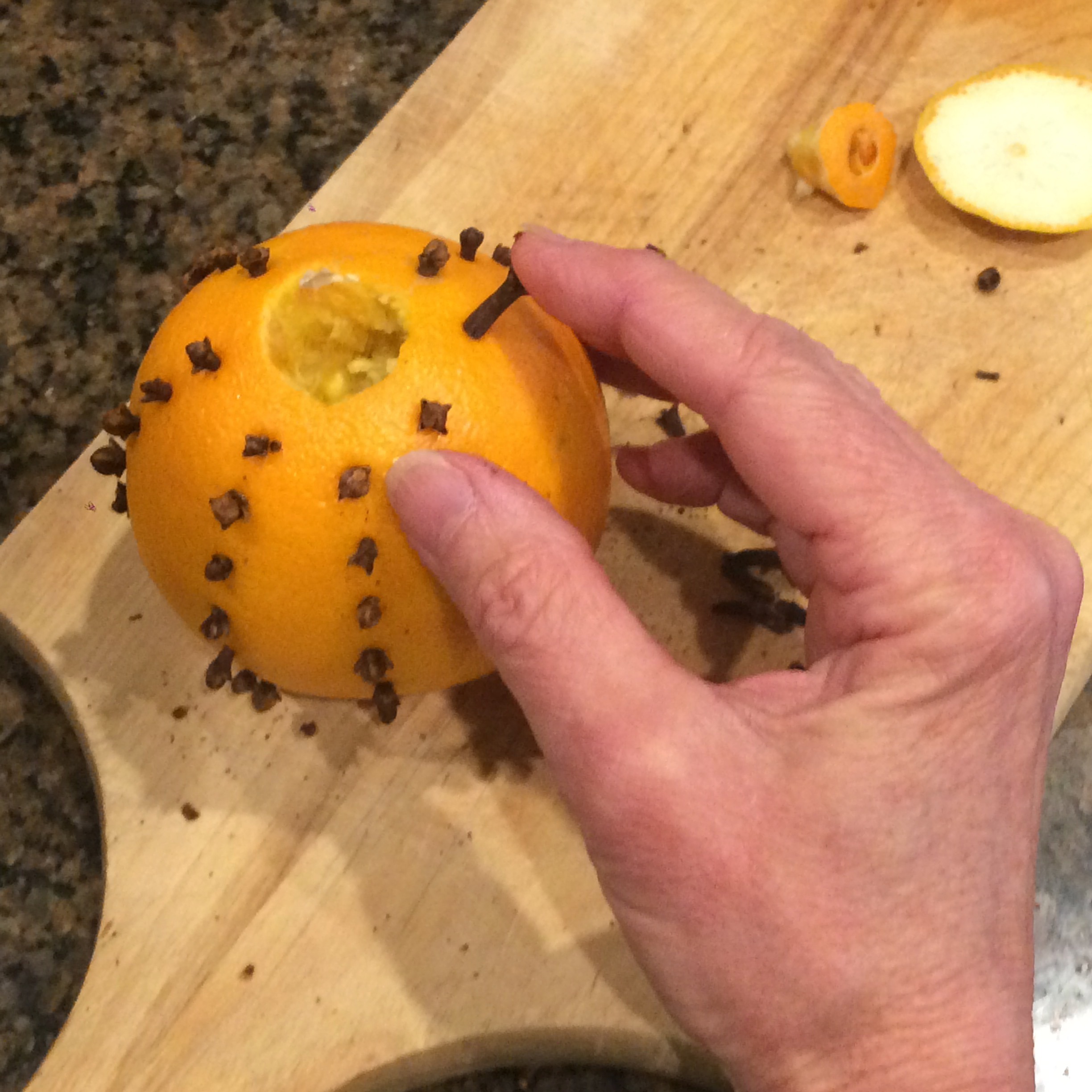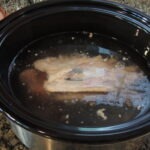We love to celebrate the Christmas holidays with special traditions and with food of course! Since citrus fruit is in season in the winter (in subtropical climates at least), it plays a prominent role on our table, both as food and as decoration. Nana (Bobbi’s Mom) would make some spiced tea with orange juice and pancakes with orange sauce. Santa would leave tangerines in the stockings. We also enjoyed making orange and clove pomanders, which added a lovely Christmas aroma to our house:

Sometimes we turned this idea into a candlestick holder for our holiday table. To make one, cut off a slice from the bottom of an orange to create a flat base. Cut a hole in the top for a candle, and then press whole cloves into the rind in a pattern of your choice:

Add a collar of foil to catch drips and insert a short candle:

We typically used these candles in our St. Nicholas Day celebration, but they are actually related to Santa Lucia Day, a church holiday celebrated on December 13th. Although not commonly observed in the US, Santa Lucia Day is a popular holiday in many parts of Europe and Scandinavia where it heralds in the Christ child who brings light into the darkness and coincides with the old date of the winter solstice.
Santa Lucia (aka Saint Lucy) was the daughter of a noble Roman family. She became a devout Christian and was tortured and killed for her beliefs. She died and was buried in Sicily during the early 4th century, supposedly on December 13th. In many parts of Italy, Santa Lucia (not St. Nicholas) is the one who brings gifts to children on the night of December 12th, accompanied by her donkey and companion, Castaldo. Children leave coffee for Lucia, a carrot for the donkey, and a glass of wine for Castaldo. If you like the idea of spreading gifts or acts of kindness across the Advent season, this is another great opportunity to do so.
Missionaries brought this story with them to Scandinavia, where it was readily adopted as a festival of lights. This is where our orange and clove candlesticks come into play. One legend tells the story of Santa Lucia bringing gifts of food to the Christians hiding from persecution in the catacombs of Rome. She wore a ring of candles on her head to free her arms to carry the food. Since December 13th was originally celebrated in Scandinavia as the Winter Solstice, this holiday was adopted by Christians to take its place.
Santa Lucia Day is celebrated in Scandinavia today with processions led by young girls dressed in white with a red sash and wearing a wreath of candles on their head or carrying a candle. Groups often go to hospitals and nursing home to hand our ginger cookies and other treats while singing Christmas carols. In some European countries, the oldest daughter dresses up in white and wakes up the family on the morning of December 13th to find their presents. Instead of candles on her head, she carries a single candle, often in an orange and clove candle holder. Breakfast includes Santa Lucia buns, which are yeast rolls made with saffron and raisins. If you don’t have time to make these rolls, try our Almond Gingersnaps or Gingerbread Men and hand out cookies instead.
However you choose to celebrate the season, we hope you’ll try your hand at making orange and clove pomanders, or candlesticks for your holiday table, and enjoy some delicious ginger cookies with family and friends.

